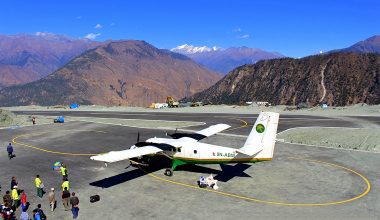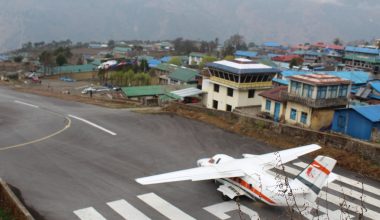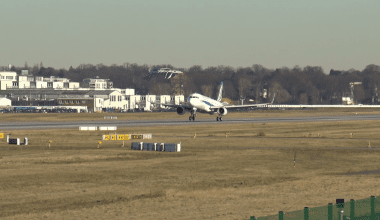-KATHMANDU
The Federal Aviation Administration (FAA) of the United States has issued an Emergency Airworthiness Directive (AD) on Wednesday to operators of Boeing 737-8 and 737-9, after the U.S. aircraft manufacturer sent a bulletin to carriers in the aftermath of a deadly Lion Air flight 610 crash.
“The emergency AD was prompted by analysis performed by the manufacturer showing that if an erroneously high single angle of attack (AOA) sensor input is received by the flight control system, there is a potential for repeated nose-down trim commands of the horizontal stabilizer. This condition, if not addressed, could cause the flight crew to have difficulty controlling the airplane, and lead to excessive nose-down attitude, significant altitude loss, and possible impact with terrain.”
The AD requires “revising certificate limitations and operating procedures of the airplane flight manual (AFM) to provide the flight crew with runaway horizontal stabilizer trim procedures to follow under certain conditions” and be implemented in less than 30 days.
Revision of Airplane Flight Manual (AFM): Certificate Limitations;
Runaway Stabilizer
In the event of an uncommanded horizontal stabilizer trim movement, combined with any of the following potential effects or indications resulting from an erroneous Angle of Attack (AOA) input, the flight crew must comply with the Runaway Stabilizer procedure in the Operating Procedures chapter of this manual:
- Continuous or intermittent stick shaker on the affected side only.
- Minimum speed bar (red and black) on the affected side only.
- Increasing nose down control forces.
- IAS DISAGREE alert.
- ALT DISAGREE alert.
- AOA DISAGREE alert (if the option is installed).
- FEEL DIFF PRESS light.
- Autopilot may disengage.
- Inability to engage autopilot.
AFM Revision: Operating Procedures;
Runaway Stabilizer
Disengage autopilot and control airplane pitch attitude with control column and main electric trim as required. If relaxing the column causes the trim to move, set stabilizer trim switches to CUTOUT. If runaway continues, hold the stabilizer trim wheel against rotation and trim the airplane manually.
Note: The 737-8/-9 uses a Flight Control Computer command of pitch trim to improve longitudinal handling characteristics. In the event of erroneous Angle of Attack (AOA) input, the pitch trim system can trim the stabilizer nose down in increments lasting up to 10 seconds.
In the event an uncommanded nose down stabilizer trim is experienced on the 737-8/-9, in conjunction with one or more of the indications or effects listed below, do the existing AFM Runaway Stabilizer procedure above, ensuring that the STAB TRIM CUTOUT switches are set to CUTOUT and stay in the CUTOUT position for the remainder of the flight.
An erroneous AOA input can cause some or all of the following indications and effects:
- Continuous or intermittent stick shaker on the affected side only.
- Minimum speed bar (red and black) on the affected side only.
- Increasing nose down control forces.
- IAS DISAGREE alert.
- ALT DISAGREE alert.
- AOA DISAGREE alert (if the option is installed).
- FEEL DIFF PRESS light.
- Autopilot may disengage.
- Inability to engage the autopilot.
Initially, higher control forces may be needed to overcome any stabilizer nose down trim already applied. Electric stabilizer trim can be used to neutralize control column pitch forces before moving the STAB TRIM CUTOUT switches to CUTOUT. Manual stabilizer trim can be used before and after the STAB TRIM CUTOUT switches are moved to CUTOUT.







